Tourism
Province
of Lucca
Mountains
of Lucca
Romanesque Parishes
Castles
 Camporgiano
Castiglione Garfagnana
Coreglia
Ghivizzano
Lucchio
Montecarlo
Nozzano
Trassilico
Verrucole
Camporgiano
Castiglione Garfagnana
Coreglia
Ghivizzano
Lucchio
Montecarlo
Nozzano
Trassilico
Verrucole
|
|
Lucca city
|
|
|
|
Roman amphitheater
The Roman amphitheatre
was built in Lucca during the first half of 1st century AD and
was completed in the Flavian age thanks to a Roman citizen named
Quinto Vibio, who, during ten years financed the work with
100.000 sesterzis. In the beginning, it rose just above the
walls, and was made up of 54 arcades, with two flights of
overlapping stairs. Subsequently, in the VIth century AD,
during the siege of Narsete (Gothic wars), it was strengthened
by closing the external arcades. In 1300, after innumerable
depredation of marbles and stones, used for the construction of
other buildings, also inside the arena, all that remained of the
amphitheatre was the skeleton (called Arrigo o Per lascio) and
the caves, were turned subsequently into the jails (called Del
Sasso).In the XIV century, the architect Lorenzo Nottolini,
ordered the demolition of the buildings inside the arena and
remoulded the amphitheatre giving it itís the actual form.
|
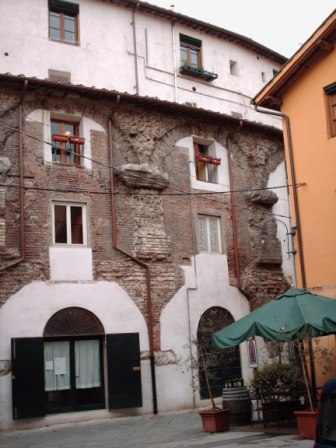 |
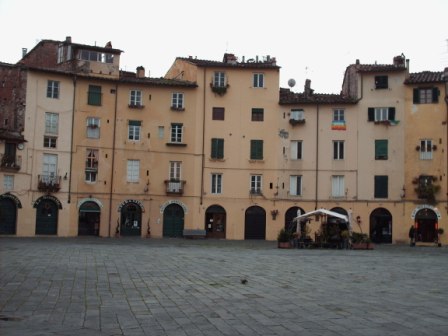 |
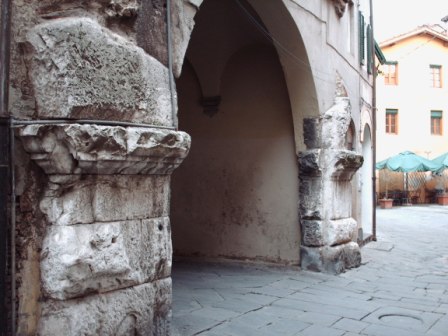 |
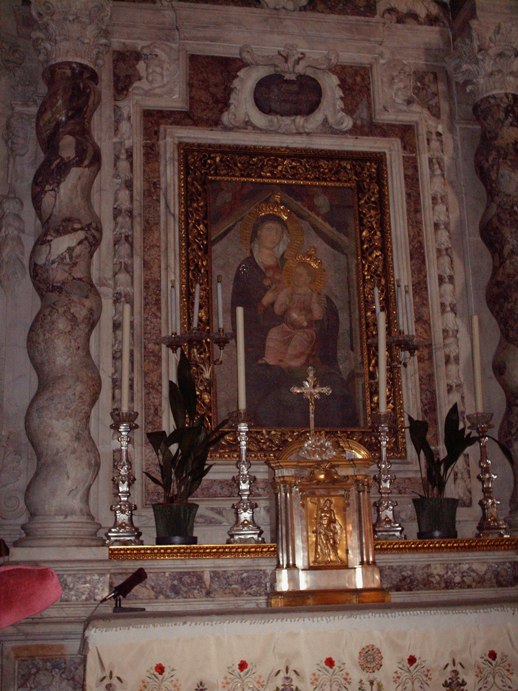 Church
of S.Maria of the Roses
The
church of S.Maria of the Roses, was built at the beginning of
the XIV century, by the Merchants university of Lucca. The
painting of the main altar shows the Madonna of the Roses, a
fourteenth-century pictorial work, among the most important in
Lucca. In the medieval times it was considered to be miraculous,
becoming an object of veneration. The miracle which brought to
the construction of the church and the veneration of the
painting, took place under a part of Roman wall that is found
today within the boundary of the building, when these were still
defending the city. In that time, shepherds used to bring their
sheep to pasture under the walls. One of these dumb from the
birth realized that his sheep, always pastured away from a green
bush. It was January and the little shepherd boy became curious
about this strange green bush, he got close up to it to find
that growing inside was a rose in bloom, he chopped off the rose
and brought it home to his father, during the journey home he
realize that he had found once again the use of his tongue. The
bishop was informed of the fact, investigated the area around
the bush and discovered a sacred image figuring a Madonna and
Child, with a sprig of three roses in her hand.
Church
of S.Maria of the Roses
The
church of S.Maria of the Roses, was built at the beginning of
the XIV century, by the Merchants university of Lucca. The
painting of the main altar shows the Madonna of the Roses, a
fourteenth-century pictorial work, among the most important in
Lucca. In the medieval times it was considered to be miraculous,
becoming an object of veneration. The miracle which brought to
the construction of the church and the veneration of the
painting, took place under a part of Roman wall that is found
today within the boundary of the building, when these were still
defending the city. In that time, shepherds used to bring their
sheep to pasture under the walls. One of these dumb from the
birth realized that his sheep, always pastured away from a green
bush. It was January and the little shepherd boy became curious
about this strange green bush, he got close up to it to find
that growing inside was a rose in bloom, he chopped off the rose
and brought it home to his father, during the journey home he
realize that he had found once again the use of his tongue. The
bishop was informed of the fact, investigated the area around
the bush and discovered a sacred image figuring a Madonna and
Child, with a sprig of three roses in her hand.
|
|
|
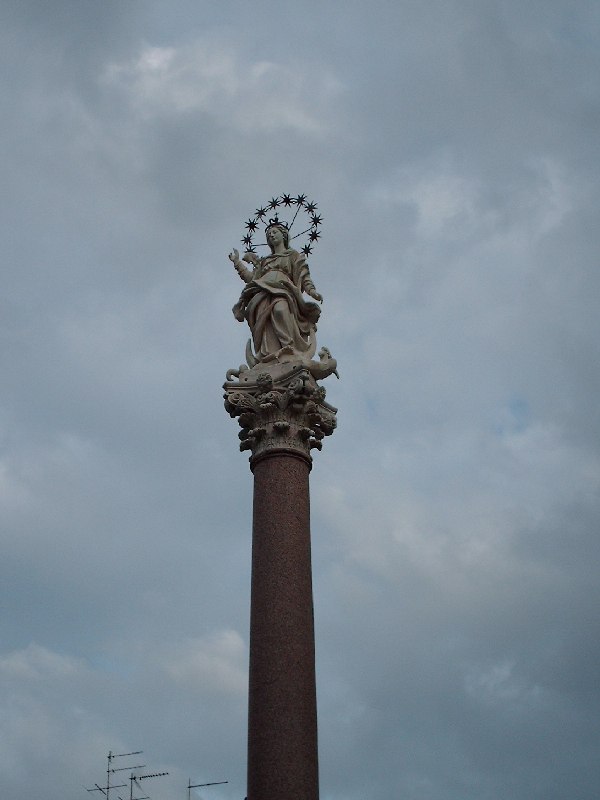 |
Madonna of the Stellario
The Madonna of the Stellario, was given to
"Company of the Conception or the Stellario" that had itís base
in San Francisco. It was created by the sculptor Giovanni
Lanzoni, and was situated, under the orders of Corinzio, above
the column, in 1687. On the plinth of the column, a view of XVII
century Lucca is represented. |
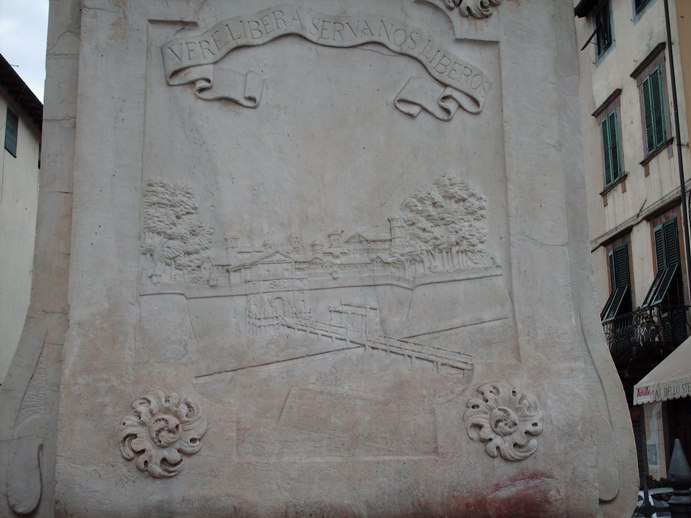 |
|
The Door of St. Gervasio
and Protasio |
|
The medieval door, dedicated to Saint Gervasio and Saint
Protasio, that we can still see intact today, with itís
unmistakable cylindrical towers on the sides, is one of the
three doors remained of the second belt of the walls of Lucca,
it was built on the remains of an old Roman Door and was
completed in the first half the XIII century.
|
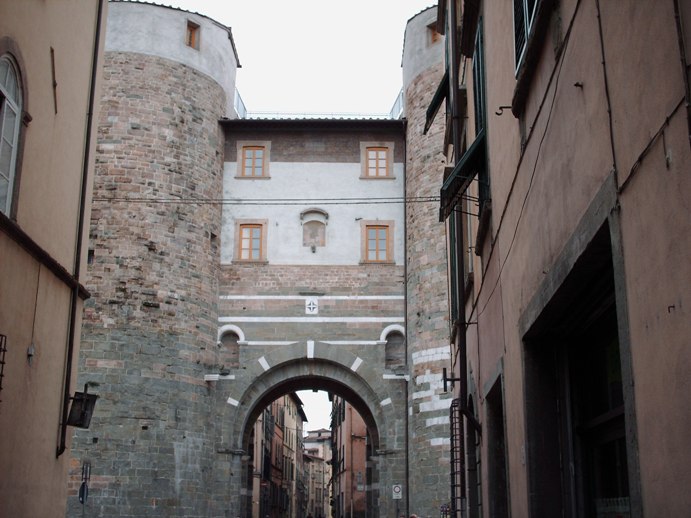 |
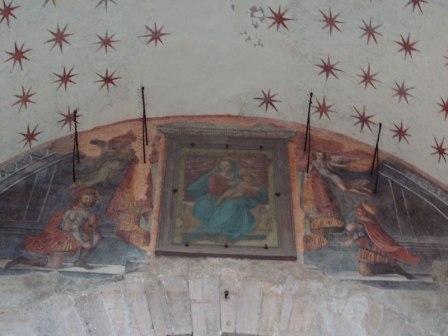 |
| |




 Church
of S.Maria of the Roses
The
church of S.Maria of the Roses, was built at the beginning of
the XIV century, by the Merchants university of Lucca. The
painting of the main altar shows the Madonna of the Roses, a
fourteenth-century pictorial work, among the most important in
Lucca. In the medieval times it was considered to be miraculous,
becoming an object of veneration. The miracle which brought to
the construction of the church and the veneration of the
painting, took place under a part of Roman wall that is found
today within the boundary of the building, when these were still
defending the city. In that time, shepherds used to bring their
sheep to pasture under the walls. One of these dumb from the
birth realized that his sheep, always pastured away from a green
bush. It was January and the little shepherd boy became curious
about this strange green bush, he got close up to it to find
that growing inside was a rose in bloom, he chopped off the rose
and brought it home to his father, during the journey home he
realize that he had found once again the use of his tongue. The
bishop was informed of the fact, investigated the area around
the bush and discovered a sacred image figuring a Madonna and
Child, with a sprig of three roses in her hand.
Church
of S.Maria of the Roses
The
church of S.Maria of the Roses, was built at the beginning of
the XIV century, by the Merchants university of Lucca. The
painting of the main altar shows the Madonna of the Roses, a
fourteenth-century pictorial work, among the most important in
Lucca. In the medieval times it was considered to be miraculous,
becoming an object of veneration. The miracle which brought to
the construction of the church and the veneration of the
painting, took place under a part of Roman wall that is found
today within the boundary of the building, when these were still
defending the city. In that time, shepherds used to bring their
sheep to pasture under the walls. One of these dumb from the
birth realized that his sheep, always pastured away from a green
bush. It was January and the little shepherd boy became curious
about this strange green bush, he got close up to it to find
that growing inside was a rose in bloom, he chopped off the rose
and brought it home to his father, during the journey home he
realize that he had found once again the use of his tongue. The
bishop was informed of the fact, investigated the area around
the bush and discovered a sacred image figuring a Madonna and
Child, with a sprig of three roses in her hand.



